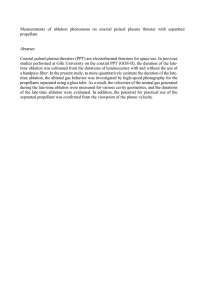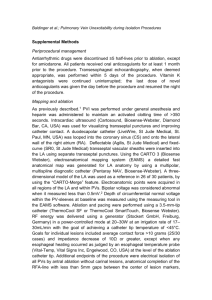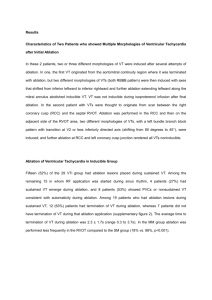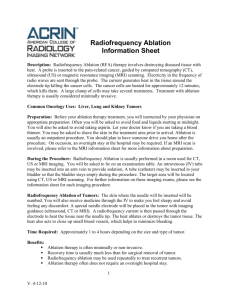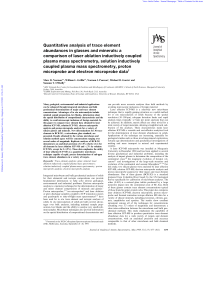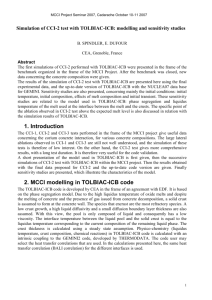Online Resource 1. Analytical methods Mineral chemistry Thin
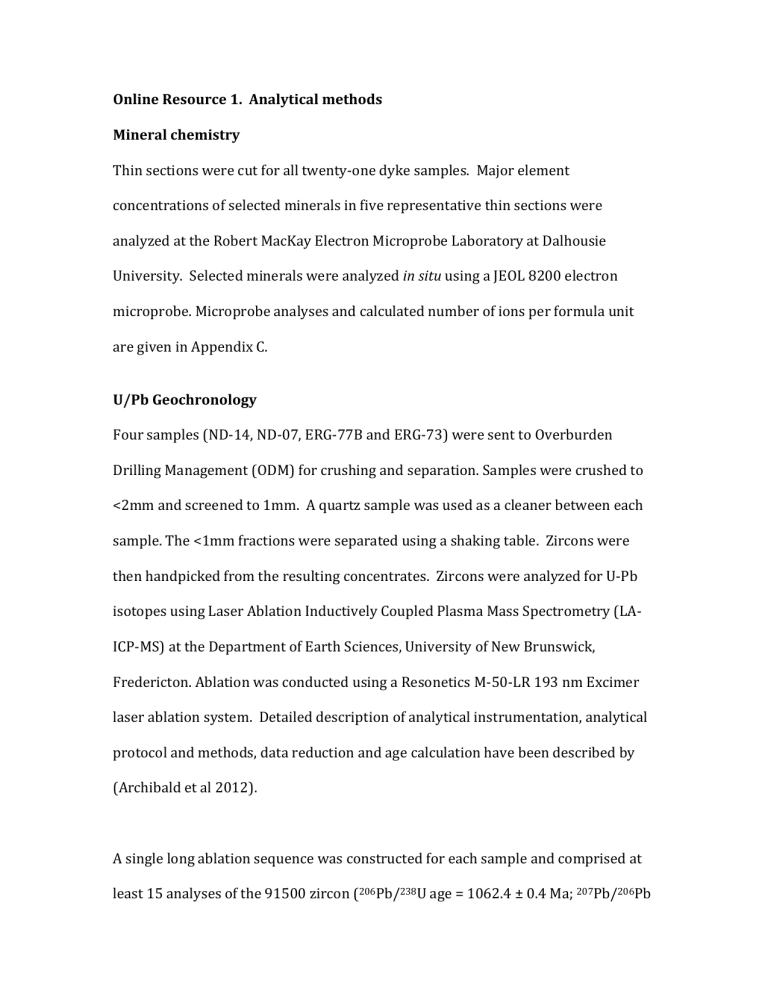
Online Resource 1. Analytical methods
Mineral chemistry
Thin sections were cut for all twenty-one dyke samples. Major element concentrations of selected minerals in five representative thin sections were analyzed at the Robert MacKay Electron Microprobe Laboratory at Dalhousie
University. Selected minerals were analyzed in situ using a JEOL 8200 electron microprobe. Microprobe analyses and calculated number of ions per formula unit are given in Appendix C.
U/Pb Geochronology
Four samples (ND-14, ND-07, ERG-77B and ERG-73) were sent to Overburden
Drilling Management (ODM) for crushing and separation. Samples were crushed to
<2mm and screened to 1mm. A quartz sample was used as a cleaner between each sample. The <1mm fractions were separated using a shaking table. Zircons were then handpicked from the resulting concentrates. Zircons were analyzed for U-Pb isotopes using Laser Ablation Inductively Coupled Plasma Mass Spectrometry (LA-
ICP-MS) at the Department of Earth Sciences, University of New Brunswick,
Fredericton. Ablation was conducted using a Resonetics M-50-LR 193 nm Excimer laser ablation system. Detailed description of analytical instrumentation, analytical protocol and methods, data reduction and age calculation have been described by
(Archibald et al 2012).
A single long ablation sequence was constructed for each sample and comprised at least 15 analyses of the 91500 zircon ( 206 Pb/ 238 U age = 1062.4 ± 0.4 Ma; 207 Pb/ 206 Pb
age = 1065.4 ± 0.3 Ma; (Wiedenbeck et al. 1995) which was interspersed with the
unknown target grains and used as an external standard to correct for down-hole fractionation, instrument drift, and mass-bias. Each ablation in the sequence comprised 30 sec of gas background collection followed by 30-35 sec of ablation.
Time-resolved intensities were collected using an Agilent 7700x quadrupole ICP-MS configured with dual external rotary pumps. At the end of the ablation sequence, the laser log file and ICP-MS intensity data file were synchronized using Iolite™ (Paton et al. 2011) running as a plugin for Wavemetrics Igor Pro 6.22™. Laser-induced
Pb/U fractionation corrections, corrected isotope ratios, and elemental abundances were calculated offline using Iolite™ version 2.13 (February 1, 2011) and
VizualAge™ (Petrus and Kamber 2012).
Concordia ages presented in Figure 5 were calculated for clusters of three or more near-concordant points (as indicated in Tables 2 and 3) using Isoplot v3.75 (Ludwig
2012). Weighted-mean 206 Pb/ 238 U ages (average of the calculated ages weighted by the inverse square of the assigned errors) are also reported for reference.
Major and trace element abundances for twenty-one samples were determined by
X-ray fluorescence (XRF) at the Nova Scotia Regional Geochemical Center at St.
Mary’s University, Halifax. Measurements were made using a Philips PW2400 X-ray spectrometer. Detailed analytical procedures are given in Dostal et al (1994).
Geochemistry
Rare earth element analyses were determined by Inductively Coupled Plasma Mass
Spectrometry (ICP-MS) at the TERRA facility at Memorial University of
Newfoundland, St. John’s. Twelve samples were analyzed using a Fisons/Applied
Research Laboratories model 8420+ sequential wavelength-dispersive X-ray spectrometer.
Of the twelve samples analyzed for REE abundances, eight were also analyzed for
Sm-Nd isotopic abundances. Samarium-neodymium isotope abundances were analyzed at the TERRA facility at Memorial University using a Finnigan MAT 262V TI mass spectrometer. Details of analytical procedures for REE and Sm-Nd analyses can be found in Jenner et al (1990) and Kerr et al (1995), respectively. εNd values were calculated for t=315 Ma for all dykes.
References
Archibald D, Barr SM, Murphy JB, White CE, MacHattie T, Escarraga E, Hamilton M,
McFarlane C (2012) Field relationships, petrology, age, and tectonic setting of the Ordovician West Barneys River Plutonic Suite, southern Antigonish
Highlands, Nova Scotia, Canada. Can J Earth Sciences 50(7):727
Dostal J, Dupuy C, Caby R (1994) Geochemistry of the Neoproterozoic Tilemsi belt of
Iforas (Mali, Sahara): a crustal section of an oceanic island arc. Precambrian
Res 65:55-69
Jenner GA, Longerich HP, Jackson SE, Fryer BJ (1990) ICP-MS: a powerful tool for high-precision trace-element analysis in earth sciences; evidence from analysis of selected U.S.G.S. reference samples. Chem Geol 83:133-148
Kerr A, Jenner GA, Fryer BJ (1995) Sm-Nd isotopic geochemistry of Precambrian to
Paleozoic granitoid suites and the deep-crustal structure of the southeast margin of the Newfoundland Appalachians. Can J Earth Sciences 32:224-245
Ludwig KR (2012) Isoplot 3.00: A Geochronological Toolkit for Microsoft Excel
Berkeley Geochronological Centre Special Publication no. 4
Paton C, Hellstrom JC, Paul B, Woodhead JD, Hergt JM (2011) Iolite: Freeware for the visualisation and processing of mass spectrometric data. J Anal Atomic
Spectrom 26:2508-2518
Petrus JA, Kamber BS (2012) VizualAge: A novel approach to Laser Ablation ICP-MS
U-Pb geochronology data reduction: Geostandards and Geoanalytical Research doi: 10.1111/j.1751-908X.2012.00158
Wiedenbeck M, Alle P, Corfu F, Griffin WL, Meier M, Oberli F, Von Quadt A, Roddick,
JC, Speigel W (1995) Three natural zircon standards for U-Th-Pb, Lu-Hf, trace element and REE analyses. Geostand Newsl J Geostand and Geoanalysis 19:1-
23

